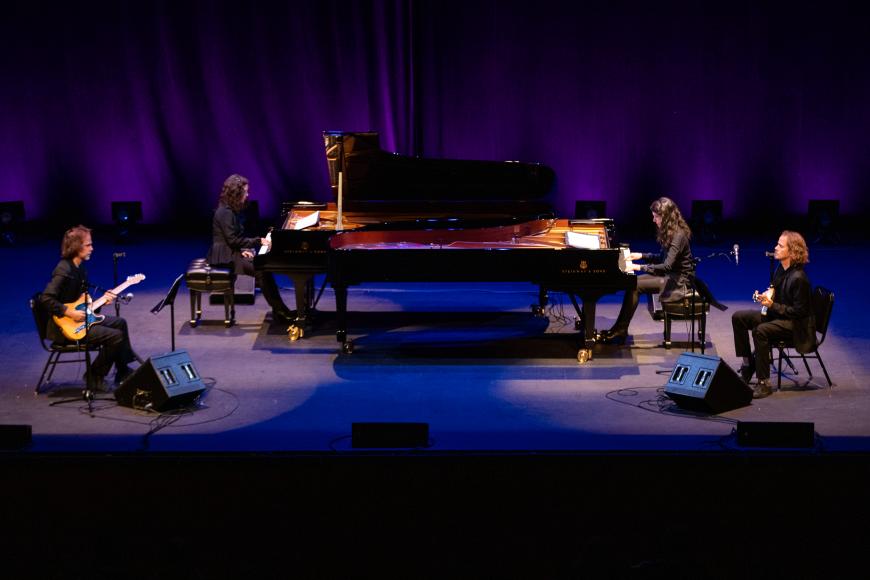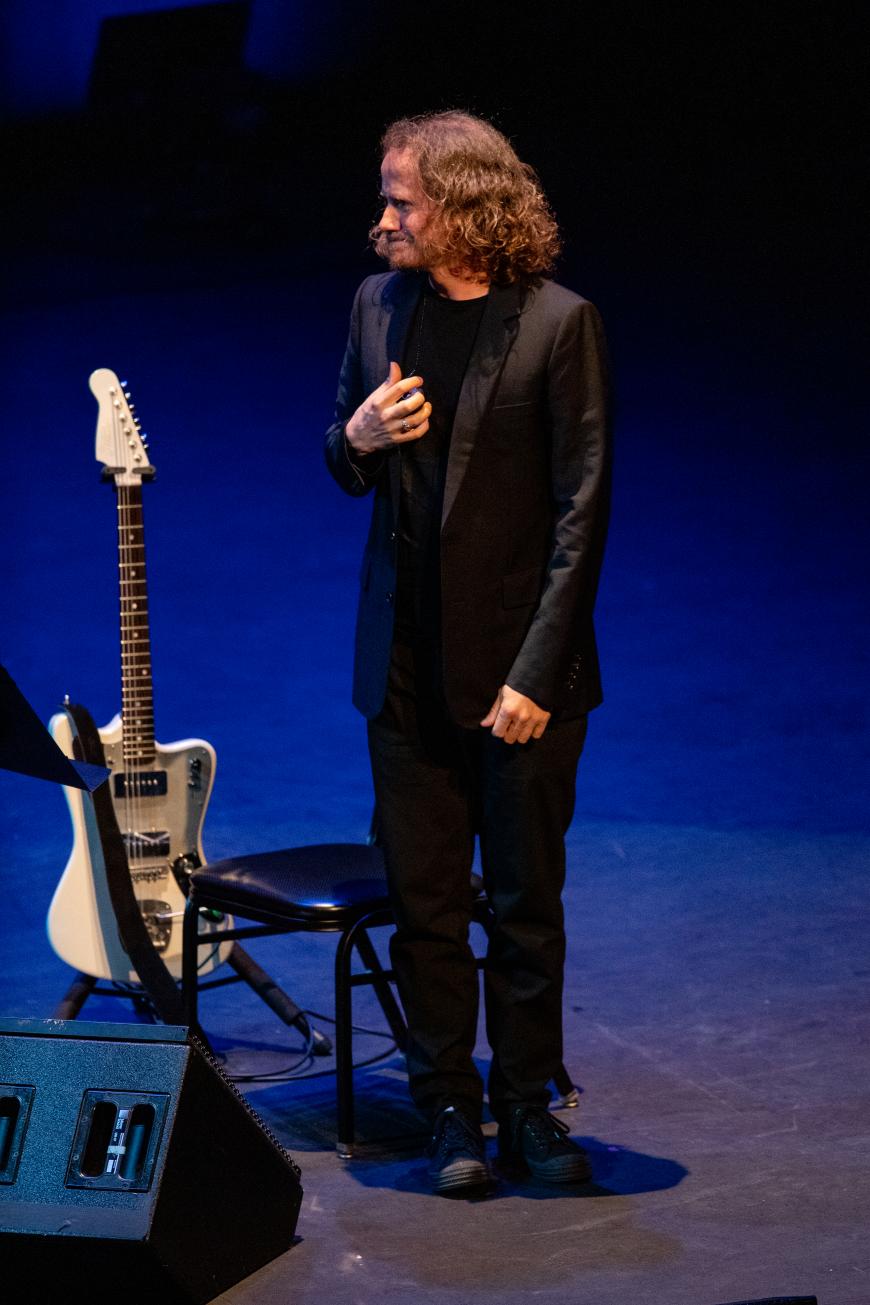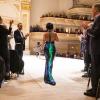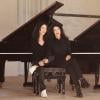
Together, sisters Katia and Marielle Làbeque, commanding two pianos, and composers Bryce Dessner and David Chalmin, rocking out on electric guitars, are Dream House Quartet. The ensemble has a symmetry befitting its minimalist repertoire, echoing the mirrored ensembles of composer Steve Reich, and a combined timbre that is surprisingly seamless. The group’s concert at Royce Hall on April 30, presented by the Center for the Art of Performance at UCLA, included pieces by Dessner and Chalmin, as well as minimalist staples by Reich, Philip Glass, and Meredith Monk and a new work by Radiohead’s Thom Yorke. (The Quartet was nearing the end of its debut North American tour, which was at Stanford Live and Costa Mesa’s Segerstrom Center for the Arts in the days before.)

Walking away from this show, I was impressed by the power and elegance of the performance but also less affected by the music in the end. The sound mix was superb, bringing the chiming of the pianos and electric guitars into the same space, articulated and engulfing. Yet in the final two pieces, I could barely hear Chamlin, and for the duration of the show, there was clearly something blown out in one of the stage speakers, causing a fuzz whenever the pianists went into the high register.
These hugely distracting technical difficulties were simply unfortunate because the sound balance was otherwise incredible. But that distraction mirrors my feelings about the performance broadly. Odd little conflicts like this got under my skin.
Dessner and Chalmin have written multiple pieces for the Quartet since it formed in 2018, and many more have been commissioned from composers like Caroline Shaw, Timo Andres, and Anna Thorvaldsdottir. There is naturally a strong minimalist aesthetic to the group’s growing repertoire — a current deriving from the Làbeque sisters’ work with Philip Glass, which meets up with Dessner’s polyphonic textures. Further, accompanying the ensemble on this tour was producer and sound engineer Dan Bora, who has worked extensively on the production of Glass’s recordings since the early aughts.
There really is something special in the combination of pianos and electric guitars. The attacks of both instruments are precise, and their trains of sound taper away in a similar fashion. The Quartet could achieve a pointillist surface like shimmering finery, especially when the guitars were in a plain, clean sound not substantially modified by effects. It was perfect for the continuous motion of Dessner’s Haven, which opened the show, and watery and touching for Lisa Kaplan’s arrangement of Monk’s Ellis Island.
But by the end of the performance, I was fatigued by the sameness of the sound profile. Dessner and Chalmin never equaled the power and fire that the Làbeques brought.
The duo pianists are known for their synchronicity and dynamism, perfect for commanding the long, dramatic arc of Glass’s Four Movements for Two Pianos. However, I was more drawn to their smokey, quiet moments, highlighted in their performance of Part 3 of Yorke’s Don’t Fear the Light — elegant and made of rising gestures, like cobwebs decorating a chandelier.
There was little deviation from clean tone in the guitars, though maybe this wasn’t surprising, given Dessner’s work with his band The National. Unlike classical instruments, the electric guitar’s lexicon of expression is tied to the specific bends and effects that players use to convey emotion. Besides the use of EBow (a magnetic device that activates a string to produce long, almost synthy tones) in the last two pieces, there was not much variation in Dessner’s and Chalmin’s playing. There is an emotional signature to a pianist falling hard on a chord, overdriving the instrument. Literally, overdrive on guitar can be used similarly. I hope this half of the Quartet can rise to the expressive bar set by their pianist colleagues in the future.



